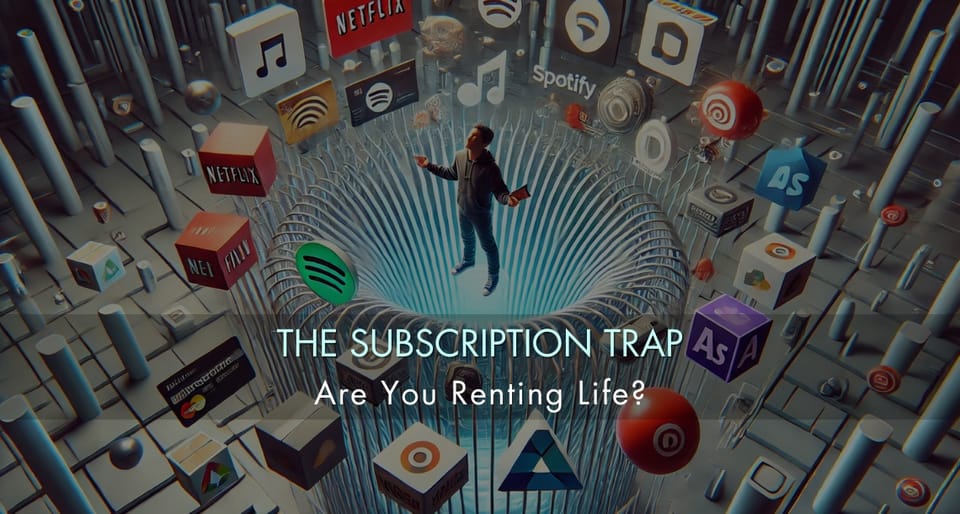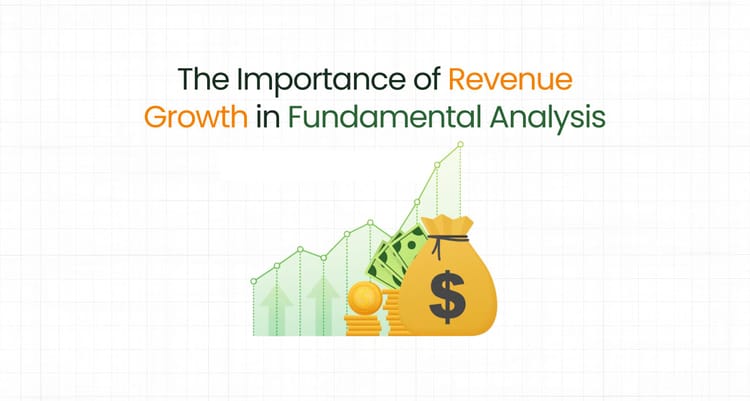The Subscription Trap: Are You Renting Life?

Remember when you used to own things? Now, you just subscribe—month after month, year after year. The subscription economy has taken over, from movies 🎬 (Netflix) to music 🎵 (Spotify), cloud storage ☁️ (Google Drive), and even your daily coffee ☕ (Blue Tokai subscriptions). But is this convenience or a trap?
Why everything is turning into a monthly fee and how companies are locking us into a system that makes us pay, stay, and play.
The Shift from Ownership to Access
Not long ago, we bought DVDs, downloaded MP3s, and stored files on external hard drives. Now, instead of owning, we rent access to content and services. Businesses have mastered the art of turning one-time customers into lifelong subscribers.
Why? Because a single sale isn’t as lucrative as a customer paying forever.
Examples of Subscription Dominance:
🔹 Entertainment: Netflix, Prime Video, Disney+
🔹 Music & Software: Spotify, Apple Music, Adobe Creative Cloud
🔹 Cloud & Storage: Google Drive, Dropbox, OneDrive
🔹 Fitness & Health: Cult.Fit, WHOOP, Peloton
🔹 Food & Essentials: Meal kit subscriptions, coffee memberships
Even the automobile industry is moving toward a pay-per-feature model where you may own the car, but the premium features will be locked behind a monthly fee.
💡 Why Do Companies LOVE the Subscription Model?
1. Steady, Predictable Cash Flow
Unlike one-time sales, subscriptions guarantee monthly revenue. This makes it easier for businesses to scale, attract investors, and forecast earnings.
2. Customer Stickiness & Habit Formation
Once you subscribe, you get hooked—and canceling feels like a loss. People rarely cancel services they might use, even if they don’t fully utilize them.
3. Scalability = More Profits
Adding one more user costs almost nothing in digital services. Whether it’s Netflix, Spotify, or Adobe, these companies keep growing without heavy additional costs.
4. The Illusion of Affordability
Instead of charging a high upfront fee, companies break it down into small, digestible amounts—making customers feel like they’re spending less, even when they end up paying more over time.
📉 The Hidden Downsides: Are We Paying More in the Long Run?
🔻 Accumulated Costs Add Up
Buying Adobe Photoshop once in 2012: ₹30,000
Adobe Creative Cloud subscription in 2024: ₹4,500 per month = ₹54,000 per year!
At this rate, you’ll pay more in 2 years than you would’ve in a lifetime purchase.
🔻 You Stop "Owning" Anything
If you cancel your Netflix subscription, you lose all access.
If you stop paying for Adobe, your creative tools vanish.
Businesses have made ownership obsolete, forcing users into endless payments with no exit.
🤯 What’s Next? Subscriptions for Air & Sunlight?
At this rate, what’s stopping companies from charging for basic necessities?
🔹 Pay ₹999/month for "premium clean air"?
🔹 Unlock "premium sunlight access" for rooftop solar panels?
🔹 Personalized AI assistant for ₹499/month?
Sounds extreme? Maybe. But so did paying for bottled water 50 years ago.
The reality is: as long as people are willing to subscribe, companies will find new ways to charge for things we once owned.
How Can You Break Free?
1. Audit Your Subscriptions – Are you paying for services you don’t fully use? Cancel unnecessary ones.
2. Choose Ownership Where Possible – Buy instead of renting where it makes sense (e.g., software, books, gym equipment).
3. Invest in Subscription-Based Companies – If you can’t beat them, profit from them! Companies like Microsoft, Netflix, and Adobe thrive on subscriptions.
4. Avoid the "Convenience Trap" – Don’t let small monthly payments fool you into spending way more in the long run.
Own Smart, Subscribe Wisely!
The subscription economy is here to stay. But instead of getting trapped, be a smart consumer—know when to rent, when to buy, and when to invest in companies profiting from the model.
FAQs – The Subscription Trap: Are You Renting Life?
1️⃣ What is the Subscription Economy?
The Subscription Economy refers to the business model where companies offer products and services on a recurring payment basis (monthly, quarterly, or annually) instead of a one-time purchase. It includes services like Netflix, Spotify, Adobe, cloud storage, and even coffee subscriptions.
2️⃣ Why are companies shifting to subscriptions instead of one-time sales?
Companies prefer subscriptions because they provide:
✅ Steady Cash Flow – Predictable revenue instead of relying on one-time purchases.
✅ Customer Stickiness – Subscriptions create a habit, making it hard for customers to cancel.
✅ Scalability – More users can join with minimal additional costs, increasing profitability.
3️⃣ How do subscriptions make consumers pay more in the long run?
While subscriptions seem affordable monthly, they accumulate into large lifetime costs.
For example:
🔹 Adobe Photoshop (one-time purchase in 2012): ₹30,000
🔹 Adobe Creative Cloud in 2024: ₹4,500/month = ₹54,000 per year!
Over 10 years, that’s ₹5.4 lakh spent on a tool you could’ve owned forever.
4️⃣ Why do people continue paying for subscriptions even if they don’t use them?
Psychological factors make people keep their subscriptions:
🔹 Fear of Losing Access – People think they might need the service in the future.
🔹 Auto-Renewal Trap – Subscriptions renew silently, making cancellation effortful.
🔹 Sunk Cost Fallacy – "I’ve already paid for a few months, might as well keep it."
5️⃣ Are there industries where subscription models make sense?
Yes! Some services are better suited for subscriptions, such as:
🔹 Streaming (Netflix, Spotify, Prime Video) – Content is constantly updated.
🔹 Cloud Storage (Google Drive, Dropbox, OneDrive) – Users need continuous access.
🔹 Software-as-a-Service (Microsoft Office, Adobe, Zoom) – Provides updates & support.
6️⃣ What’s the worst-case scenario of the subscription economy?
If everything moves to a pay-per-use model, we might see:
Air subscriptions? Pay for “premium oxygen” in polluted cities.
Sunlight fees? Rooftop solar panels with a monthly access charge.
Water metering? Smart water taps that charge based on daily consumption.
While it sounds extreme, companies have already experimented with car features behind paywalls and meal kits instead of grocery shopping.
7️⃣ How can I avoid getting trapped in subscriptions?
Here’s how to take control of your spending:
🔹 Review & Cancel Unused Subscriptions – Audit your expenses regularly.
🔹 Prefer One-Time Purchases Where Possible – Buy software, gym equipment, and books instead of renting.
🔹 Invest in Subscription-Based Companies – If you can’t beat them, profit from them! (e.g., Netflix, Adobe, Microsoft).
🔹 Use Prepaid Plans Instead of Auto-Renewals – Avoid long-term commitments by choosing pay-as-you-go models.
8️⃣ Is the Subscription Economy good for investors?
Yes! Many high-growth companies thrive on subscriptions because they generate recurring revenue and higher lifetime value per customer.
🔹 Good Subscription-Based Stocks:
✅ Microsoft (MS Office 365)
✅ Adobe (Creative Cloud)
✅ Netflix & Spotify (Streaming)
✅ Amazon (Prime Membership)
✅ Tesla (Self-Driving Subscription)
If you’re an investor, these companies benefit from the shift to subscriptions, making them potentially strong long-term plays.
9️⃣ Will ownership ever come back, or is renting the future?
Ownership won’t disappear entirely, but industries will continue experimenting with subscription-based models where they make sense.
Hybrid models may emerge, where you own the basics but pay for premium features.
🔹 Example: Instead of buying a Tesla self-driving feature outright, you pay monthly for software updates & AI improvements.
🔹 Example: Instead of owning a gym membership, you pay for a per-session digital workout.
The key is choosing wisely—subscribe where it adds value and own where it saves money in the long run.
🔟 Final Thoughts: Is the Subscription Economy a Trap or a Smart Model?
The subscription model isn’t inherently bad, but it can trap consumers into endless payments. Companies have mastered making subscriptions seem small while making ownership difficult.
✅ For Businesses: It’s a brilliant revenue model.
❌ For Consumers: It requires smart financial management to avoid overspending.
💡 Be mindful of what you subscribe to—some things are better owned!



Member discussion